Iran's Beautiful Castles: Top 20 Historical Fortresses You Must Visit
Iran's beautiful castles are among the most cherished tourist destinations in the country.
These ancient strongholds, rich with historical legends, each offer a distinct and captivating story. In this article, we will explore the fascinating tales of the top 20 Iranian castles and fortresses that have become popular choices for tourists. Unsure which of Iran's historical castles to add to your itinerary? We’re here to guide you! Iran, a country that has weathered the highs and lows of history and numerous invasions, is adorned with these historical landmarks.
List of Top 20 Iran's Beautiful Castles
- Alamut Castle
- Arg-e Karim Khan
- Babak Fort (Qaleh Babak)
- Bam Castle
- Borazjan Castle
- Citadel of Bam (Arg-e Bam)
- Falak-ol-Aflak Castle
- Forg Castle
- Ghaleh Dokhtar
- Izadkhast Citadel
- Narin Ghal’eh Castle
- Qeshm Portuguese Castle
- Qiz Qalasi (Maiden's Castle)
- Rayen Citadel
- Rudkhan Castle
- Sab Castle
- Sar Yazd Iranian Castle
- Shush Castle
- Takht -e- Soleiman
- Zahhak Citadel
1- Alamut Castle
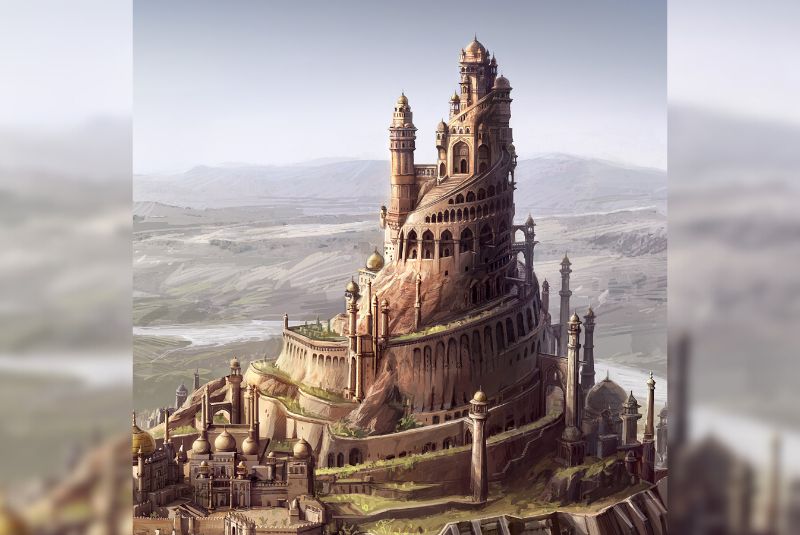
Hassan Sabbah (1050–1124 AD), a leader of the Shiite Ismaili sect, sought refuge and gathered followers in the valleys of Alamut to escape persecution by Iranian rulers. Originally, Alamut Castle was controlled by local rulers. However, Hassan Sabbah and his followers devised a plan to seize the fortress without any bloodshed, reportedly even compensating the former ruler for the property.
Under Hassan Sabbah's leadership, the castle became a stronghold for his followers, known as the Order of Assassins. They enhanced the castle’s water systems and reinforced its defenses. Notably, they established a remarkable library filled with books and scientific documents on astronomy, mathematics, philosophy, and alchemy.

Although much of the original structure has been lost over time, Alamut Castle once stood as a formidable fortress in the Alamut mountain region, north of Qazvin, near Rudbar. Beyond its defensive purpose, the castle's libraries served as an intellectual hub for scientists, theologians, and philosophers of the era.
The castle, 120 meters in length, is surrounded by deep valleys, with access only from the northeast side of Hudkan Peak. One of its distinctive features is a sophisticated water supply system. This system used “Tarbushes,” earthen pipes running under the floors and through the walls, to channel water from the “Koldar” spring into rock basins within the fortress. A pond located in the middle of the castle has never run dry, showcasing the ingenuity of its water management system.
2- Arg-e Karim Khan
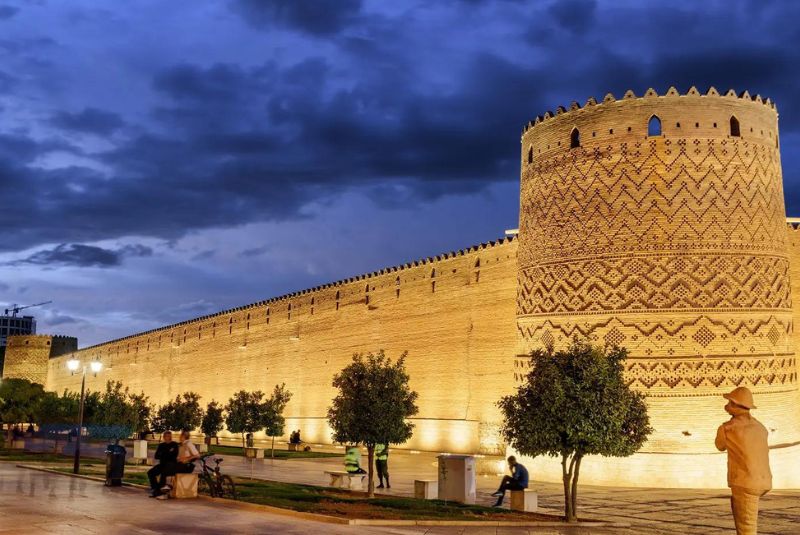
Constructed in the 18th century, the Arg-e Karim Khan in Shiraz is a testament to the Zand dynasty’s architectural influence and legacy. Built in 1697 during the Zand period, the citadel became a focal point after King Karim Khan declared Shiraz the capital city. He summoned the era's most esteemed architects and artists to design a residence befitting a ruler.
The citadel's architecture is a remarkable fusion of military strength and artistic elegance. Its towering walls and sturdy circular towers offered both protection and grandeur. Traditional Iranian architectural elements, including intricate tile work, decorative brick patterns, and detailed plaster moldings, embellish the structures, achieving a perfect balance of robustness and beauty.
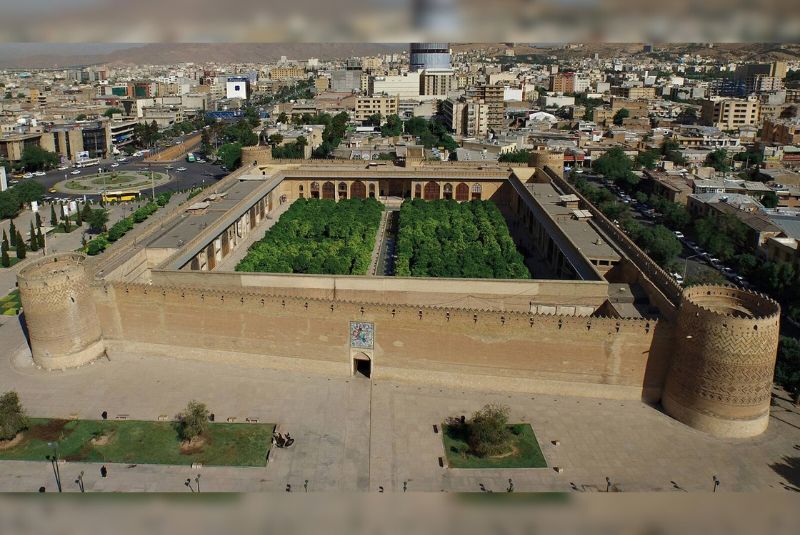
Throughout its history, Arg-e Karim Khan has served multiple purposes. Originally, it was the residence of Karim Khan Zand and his successors and later housed local rulers during the Qajar Dynasty. In the 20th century, under Pahlavi rule, the citadel was repurposed as a prison, leading to the plastering over of its paintings. Subsequent arson damaged many sections, and the site is currently undergoing renovation to be transformed into a museum.
Today, Arg-e Karim Khan is a must-see for tourists and history enthusiasts, offering a window into the rich cultural past and architectural splendor of its era. The citadel remains a symbol of Shiraz’s cultural heritage and timeless allure.
3- Babak Fort (Qaleh Babak)
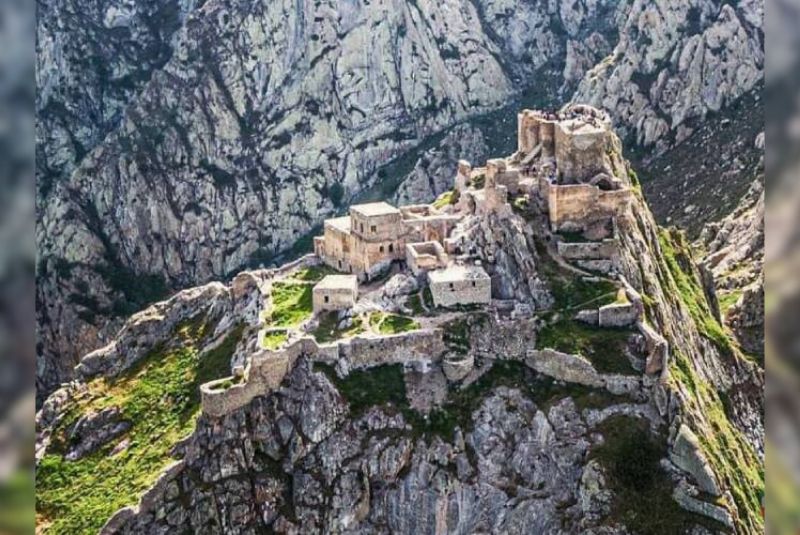
Babak Castle, also known as Ghal’eh Babak, is one of Iran's largest castles, dating back to the Sassanid or Parthian period. Perched at an elevation of 2,300 meters in the Arasbaran forests, this castle served as a strategic stronghold for Babak Khorramdin and his followers, who defended themselves against their enemies from this vantage point.
Also referred to as the Eternal Castle, Immortal Fort, or the Republic Castle, Babak Castle is considered a national symbol due to Babak Khorramdin's valiant defense against the Abbasid Arab invaders. Over the centuries, the castle has been refurbished multiple times. Despite much of the original structure being in ruins, the remnants still evoke its former grandeur.

The design of Babak Fortress allowed a small garrison to defend against a much larger force, enabling Babak and his troops to resist the invaders for years. Similar to the castle of Alamut, Babak Castle has a single entrance and is surrounded by deep, intimidating valleys. Reaching the castle is challenging, involving difficult passages and partially demolished stairs, but it remains accessible for those determined to visit this historic site.
4- Bam Castle
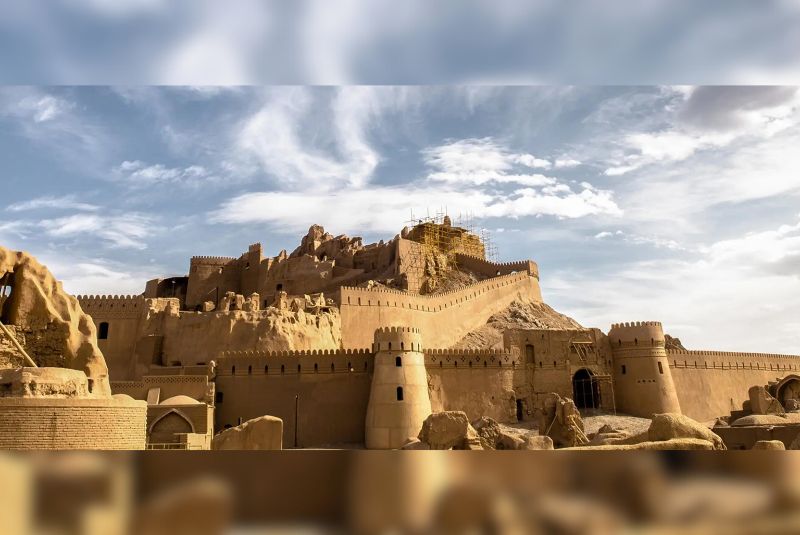
Situated near the modern city of Bam in Kerman province, Bam Castle, also known as Arg-e Bam, holds the title of the world's largest mud-brick structure. This citadel, serving as the government center of the old town of Bam, is a prominent feature of the UNESCO World Heritage Site "Bam and its Cultural Landscape." The initial construction of this enormous citadel on the Silk Road likely dates back to the Achaemenid Era (sixth to fourth centuries BC) and remained in use until 1850.
Tragically, a devastating earthquake on December 26, 2003, caused significant damage to the site.
Covering an area of approximately 180,000 square meters, the citadel is encircled by walls ranging from 2 to 7 meters in height and stretching 1,815 meters in length. The architecture of ancient Bam is divided into two distinct sections:
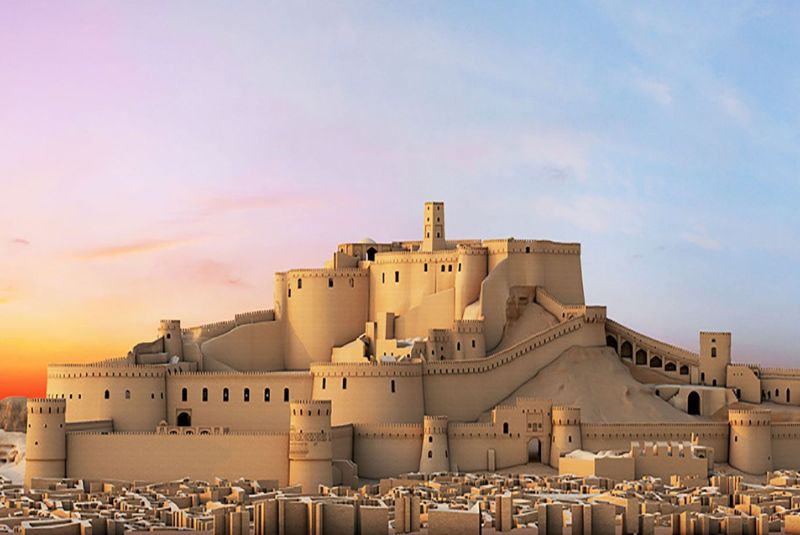
The Castle (Government Section): Located at the heart of the town within the inner walls, this area includes a military fort, the “Char Fasl” mansion, barracks, a 40-meter deep well, and stables with a capacity for 200 horses.
The Rural Section: Surrounding the government section, this area encompasses the main entrance to the city, the primary route connecting the entrance to the fortress and the market along it, about 400 houses, and public buildings such as a school, bathhouse, and gymnasiums.
Bam Castle's historical and architectural significance, coupled with its sheer size and complexity, continue to make it a fascinating site for visitors and scholars alike.
5- Borazjan Castle

Borazjan Castle, also known as Caravanserai Moshir al-Mulk, is a stunning example of Qajar-era architecture. Constructed in 1271 AD (1250 AH), this impressive fortress was commissioned by a philanthropist from Shiraz, Haj Mirza Abolhassan Khan Moshir al-Mulk Shirazi, at a cost of 40,000 tomans.
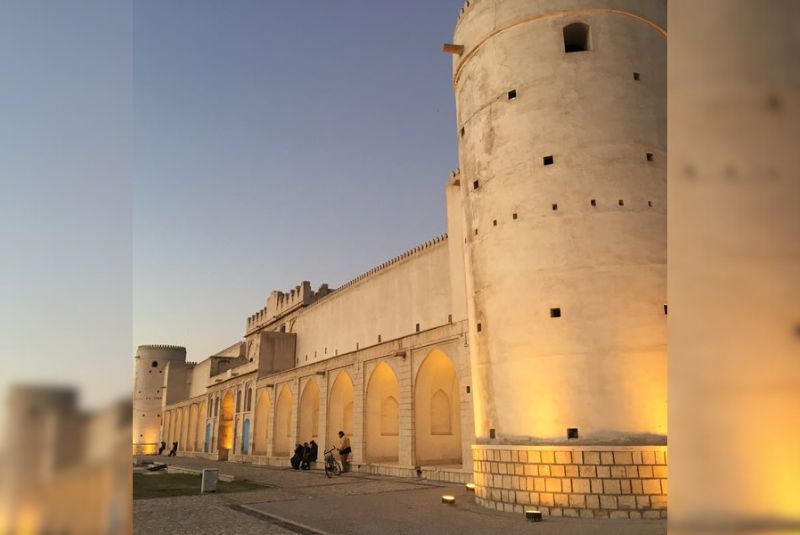
The castle stands as a testament to the grandeur and architectural sophistication of the period, reflecting the philanthropic spirit and cultural heritage of its patron.
6- Falak-ol-Aflak Castle
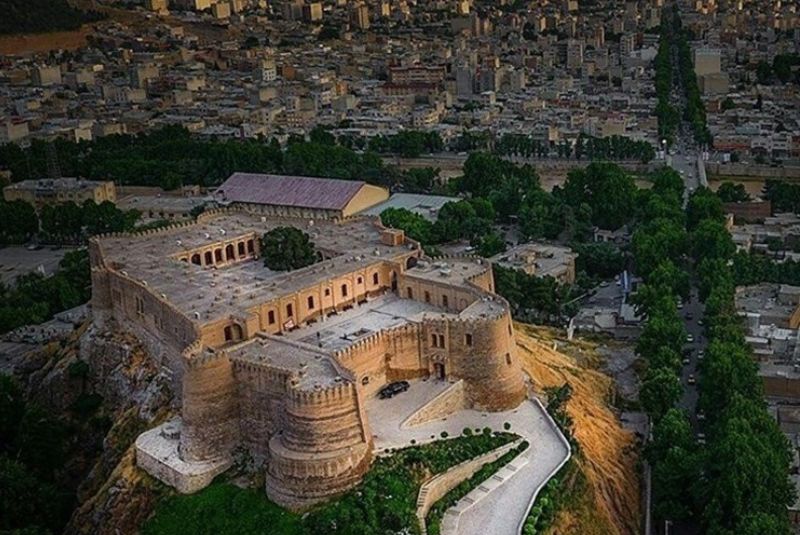
Perched on a high hill in Khorramabad, Lorestan province, Falak-ol-Aflak Castle is one of Iran's most historic fortresses, serving as a testament to the Sasanian Empire. This castle is a significant symbol of Lorestan's rich history and cultural heritage, as well as of the city of Khorramabad. Originally known as Shapur Khaast, its construction dates back to the Sassanid era in the 3rd century. The imposing structure spans approximately 5,300 square meters.
Falak-ol-Aflak Castle is hailed as a remarkable example of Iranian ingenuity and craftsmanship. Throughout history, it has been modified and repurposed, from the Sassanid period through to the Qajar era in the 19th century. Presently, it houses museums of anthropology and archaeology, drawing numerous visitors. The castle's construction utilized materials such as stone, brick, clay, and a mortar composed of plaster and lime. The entrance is located in the southwest tower, measuring 10 meters in width and 3 meters in height.
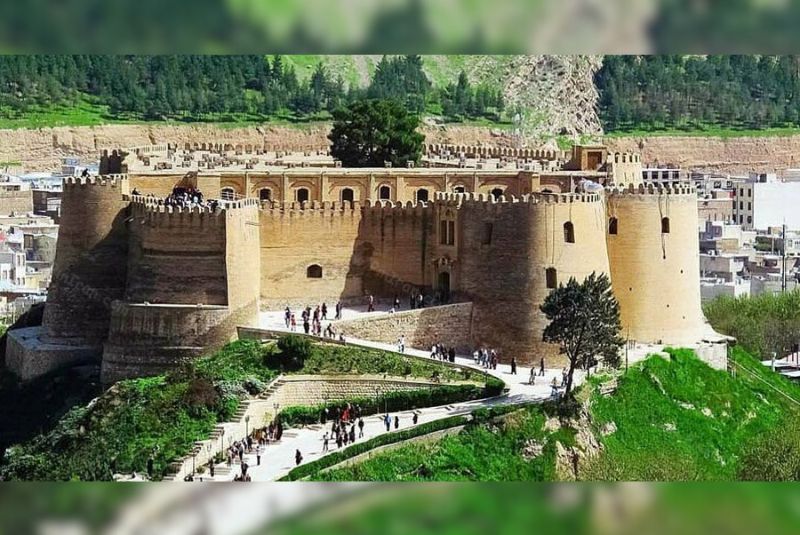
Over the centuries, Falak-ol-Aflak has undergone several restorations, with significant alterations during the Safavid and Qajar periods. Local lore and historical records suggest that up until a century ago, the fortress was surrounded by a two-tiered adobe wall featuring twelve guard towers, of which only two remain today.
The castle includes two courtyards, with the first courtyard being encircled by four towers positioned in the north, northwest, southwest, and south. The second courtyard mirrors the first in structure, with large interconnected halls on all four sides. This area currently serves as the museum space.
7- Forg Castle
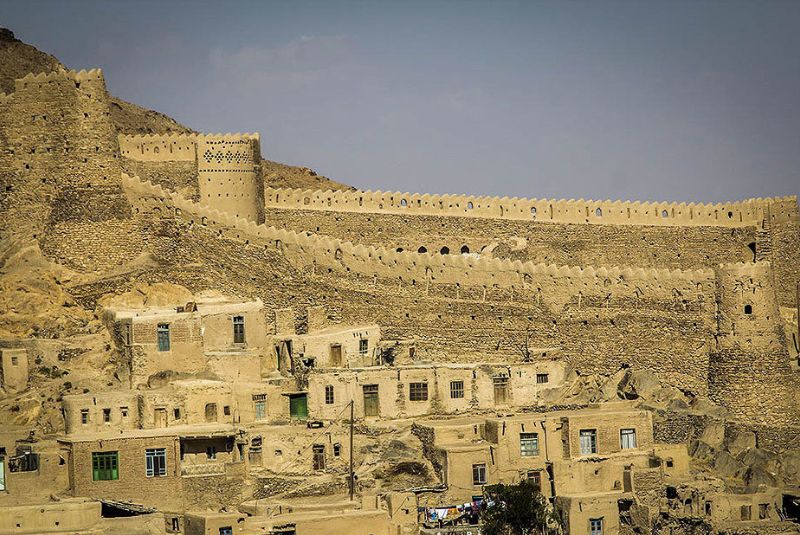
Forg Castle, also known as Mirza Rafi Khan Castle, is located 5 kilometers from Darmian city and 110 kilometers west of Birjand in Khorasan province. Positioned at an altitude of 1,840 meters, the castle sits on the heights of the middle valley and the slopes of Moman Abad Mountain, which extends to the Asdiyeh plain.
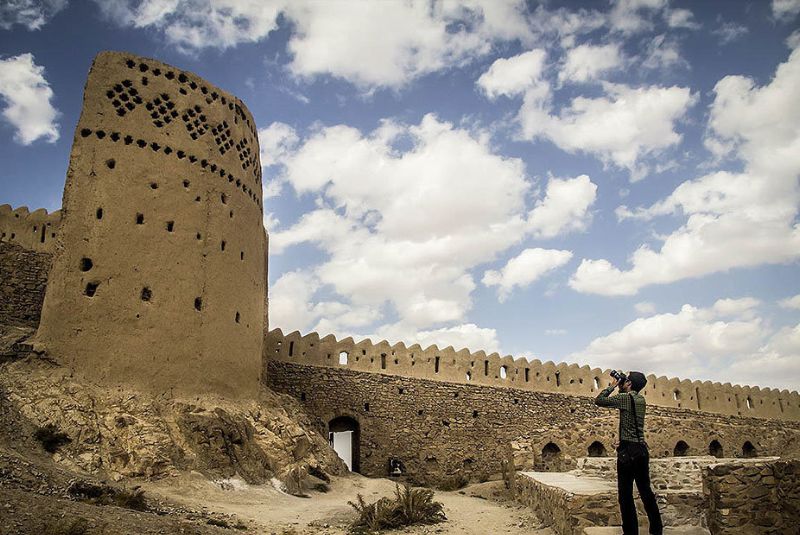
The village of Forg, situated 107 kilometers southeast of Birjand, sprawls across Momen Abad Mountain, surrounding the grand fortress of Forg. Historically significant, Forg Castle was the largest Nizari Ismaili stronghold after Alamut Castle. It is one of Iran's 10 large and valuable forts, and it has been recognized as a national monument of Iran.
8- Ghaleh Dokhtar
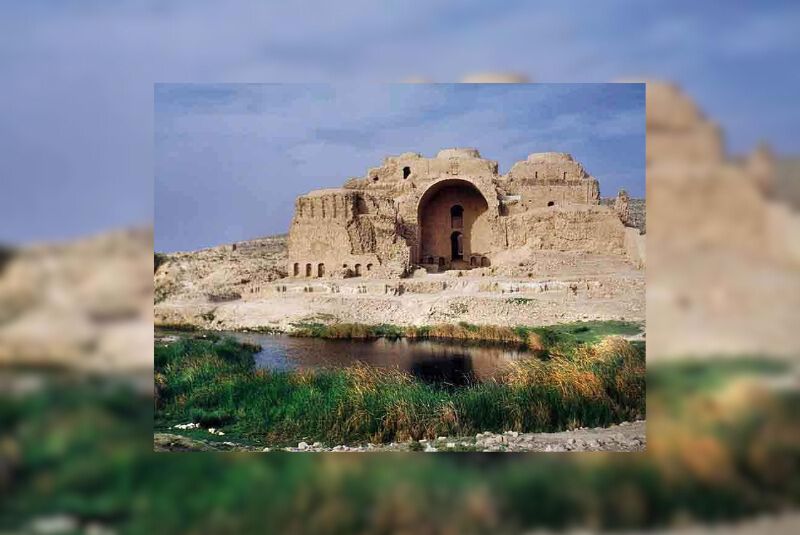
Qa’leh Dokhtar, also known as Dezh Dokhtar or "The Maiden Castle," was constructed in 209 AD by Ardashir Babkan, the founder of the Sassanian Empire. This strategically located castle, 6 kilometers from Firouzabad, sits on a mountain slope and served as a formidable barrier for enemies attempting to cross the Tangab Gorge.
The architecture of the palace within Qa’leh Dokhtar, compared to Ardashir's palace in the Firouzabad plain, suggests that the Maiden Castle was established during Ardashir I’s conflicts with the Parthians, preceding his ultimate victory over the last Parthian king, Ardavan V (Arthabanus V), in 224 AD.
The castle's main fortifications include an outer wall that extends over a sloping cliff, forming a trapezoidal shape. These defenses begin at the lower part of the Tangab Gorge and reach up to the highest part of the mountain, where the inner castle is located. The inner palace features a geometrical, multi-level design that contrasts sharply with the non-geometrical layout of the castle itself, which follows the natural contours of the mountain.
9- Izadkhast Citadel
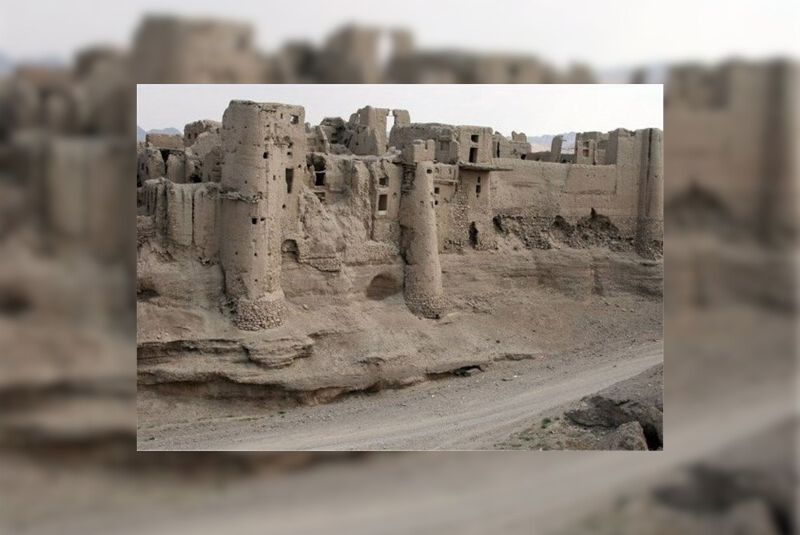
Perched on a high bedrock overlooking Izadkhast Valley, approximately 148 kilometers south of Isfahan, stands the ancient apartment complex known as Izadkhast Citadel. This 1500-year-old heritage site is surrounded by the valley on three sides, accessible only through a narrow gate.
Exploring the narrow alleys and passages within this prominent Iranian castle unveils centuries-old tiny houses and balconies, once bustling with ancient inhabitants. The now-ruined mudbrick multi-story houses provide a poignant glimpse into the lives of the people who once called this citadel home, adding depth and intrigue to your visit. Izadkhast Citadel remains a testament to Iran's rich historical and architectural legacy, attracting visitors seeking to immerse themselves in its ancient allure.
10- Markooh Castle
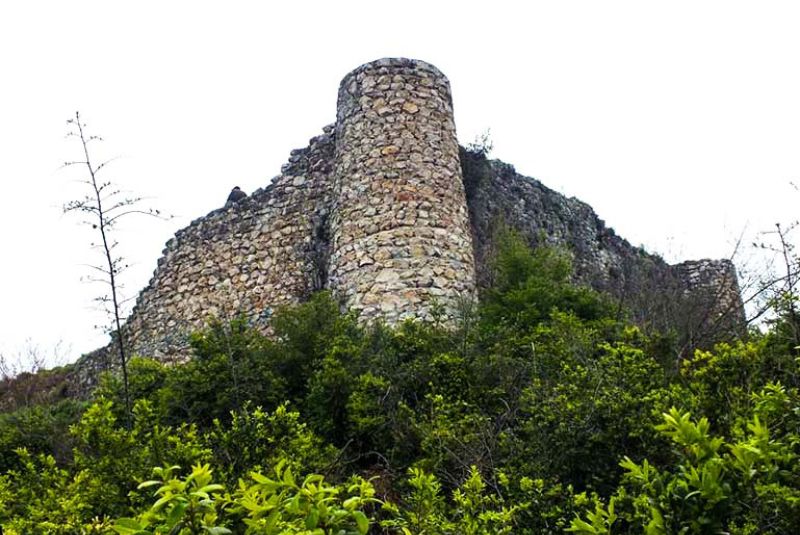
Markooh Castle, located atop a mountain in Ramsar, northern Iran, provides a fascinating look into the region's history and culture. Known as "Cloudy Mountain," this ancient fortress is steeped in mystery and folklore. Visitors can climb 300 stairs to reach the castle, which offers stunning views of both the jungle and the Caspian Sea.
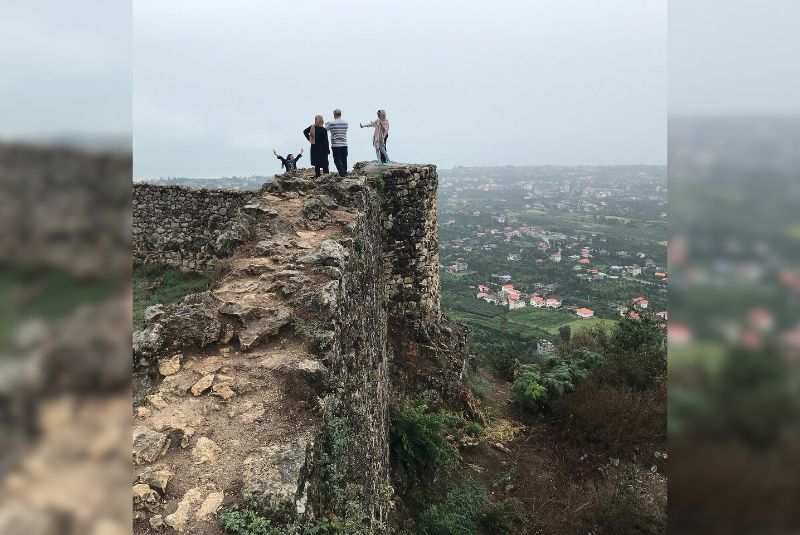
The 15-minute hike is manageable, and it's best to visit in the morning when the weather is less humid. Historically, the castle's elevated position made it an excellent lookout and defensive stronghold. Its ruins, including weathered walls and tower remnants, stir curiosity about the lives of those who once lived there. Combining history and nature, Markooh Castle is an unforgettable destination for any visitor.
11- Narin Ghal’eh Castle

Situated in the picturesque city of Meybod in Yazd province, Narin Ghal’eh Castle stands as a magnificent relic of the Parthian and Sassanid eras atop a central hill. The ruins of this impressive castle rise to about 40 meters in height, offering a panoramic view extending up to 70 kilometers in all directions from its summit.
Locally known as Narenj Ghal’eh (Orange Castle), this fortress is a prime example of authentic Iranian architecture, preserving the historical and cultural identity of Yazd for over two millennia. The castle, dating back to the Parthian period and pre-Islamic times, underwent repairs during the Muzaffarid period in the 14th century. It is surrounded by a moat, with burrows beneath it extending several kilometers.

Narin Ghal’eh is constructed entirely of clay and mud and served as a government citadel or military stronghold throughout various historical periods. Its peak significance occurred during the Sassanid period and later in the Muzaffarid era. Local lore suggests the existence of an underground tunnel connecting the castle to a black stone mill in Bakhtar Abadi Bida village, located 3 kilometers west of Meybod.
The castle features numerous interconnected rooms, many of which are still undergoing excavation. Despite its age, Narin Ghal’eh continues to be a significant symbol of Yazd's rich history and architectural heritage.
12- Qeshm Portuguese Castle
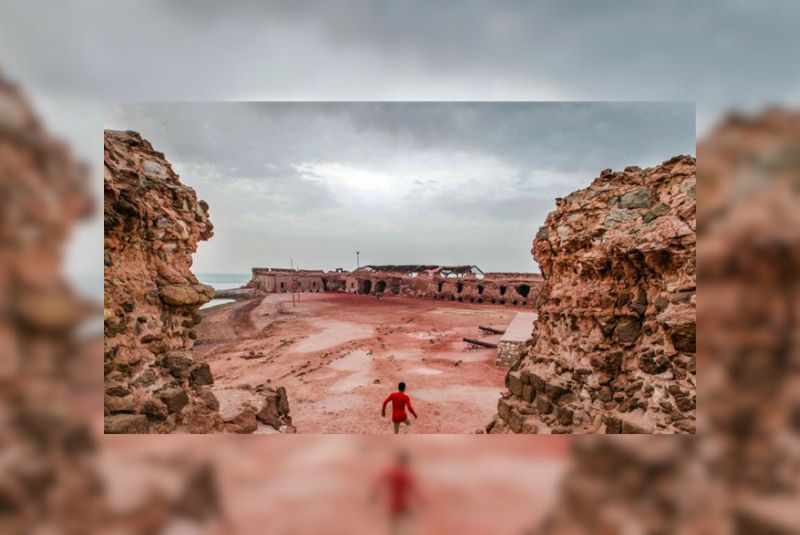
Constructed in 1030 AH, the Qeshm Portuguese Castle is one of the rare surviving monuments from the era of Portuguese rule in the Persian Gulf. Located on Qeshm Island, often referred to as the gateway to the Persian Gulf, the castle held significant strategic importance as a marine city. Positioned to the northeast of the island, the fortress was built under the orders of the Spanish monarch of the time, specifically by the Portuguese conqueror Afonso de Albuquerque.
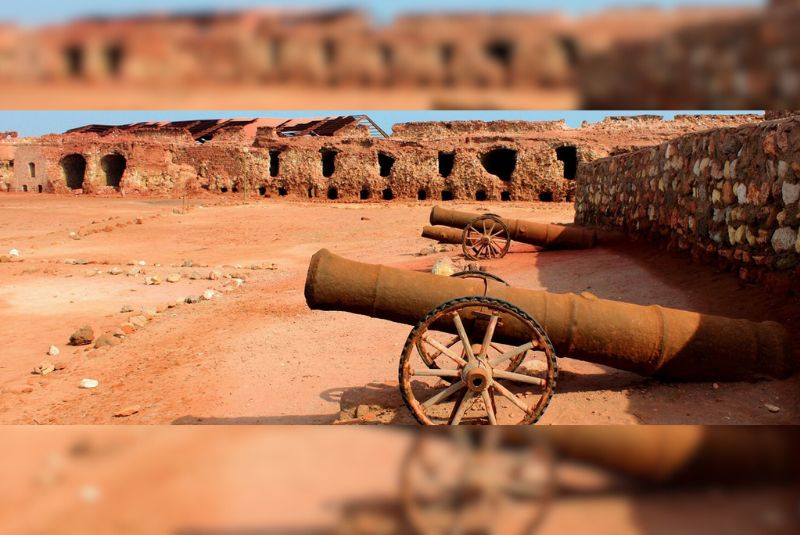
The red-hued castle features robust ramparts and towers at each of its four corners. Inside, several ancient cannons have been preserved. The structure also includes weapon caches, a large cistern, barracks, prisons, churches, and halls. Today, the Portuguese Castle is a notable attraction in Hormozgan Province, offering a glimpse into the region's rich historical past and its strategic maritime significance.
13- Qiz Qalasi (Maiden's Castle)
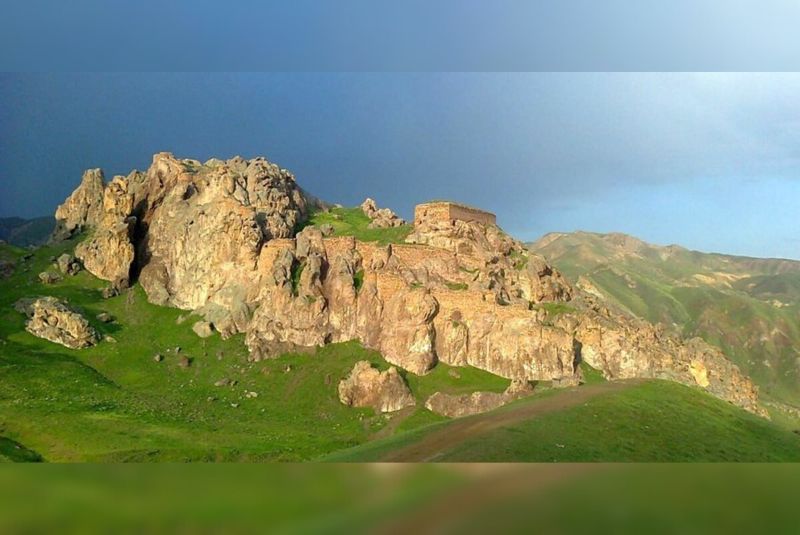
Qiz Qalasi, meaning "Maiden's Castle," is a village located south of Ardabil. The castle, whose origins trace back to ancient times, now lies in ruins in the northwestern part of the village. Among the many legends surrounding Qiz Qalasi, one of the most notable tells of the inhabitants fleeing the city due to an invasion of snakes. This storied past adds to the mystique and historical allure of Maiden's Castle, making it an intriguing destination for visitors interested in Iran's rich tapestry of folklore and history.
14- Rayen Citadel
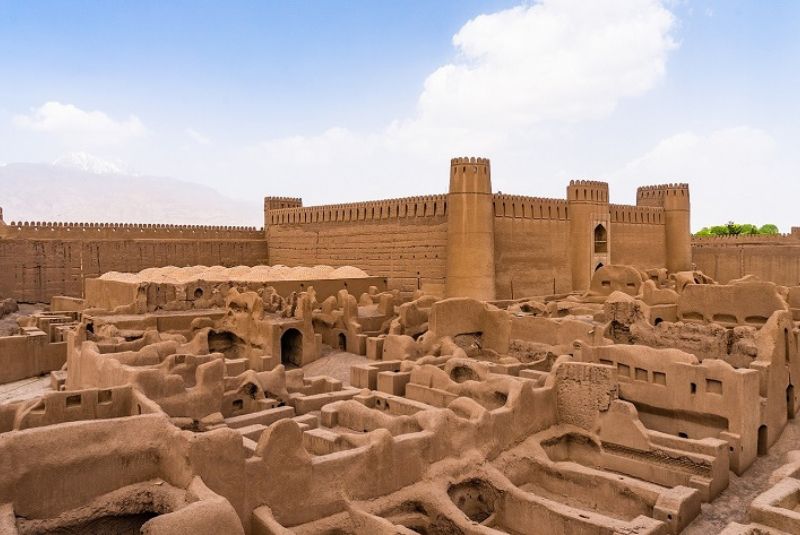
The Citadel of Rayen, recognized as the largest raw brick structure in the world after the Citadel of Bam, is located 120 kilometers south of Kerman and covers an area of 2,000 square meters. This impressive fortress, resembling the Citadel of Bam, is situated atop a hill near the Hazar Mountain. The existence of Rayen Citadel indicates that the city of Rayen predated the advent of Islam in Iran, dating back to the Sassanid era. Although older citadels in the region were destroyed by natural disasters over the centuries, Rayen Citadel has endured.
During the reign of Nâder Shâh Afshâr, the citadel served as a stronghold for Governor Mirzâ Hossein Khân and his son Mohammad ’Ali Khân. The Citadel of Rayen is among Iran's most renowned castles, notable for its historical significance and architectural grandeur.
15- Rudkhan Castle

Rudkhan Castle, also known locally as Ghal’eh Hesami or Ghal’eh Rudkhan, is a remarkable fortress from the Sassanid era, located 20 kilometers southwest of Fouman. Nestled in the forest, this castle boasts walls that extend 1,500 meters in length and is fortified with 65 guard towers. Visitors are drawn to its remote beauty, often climbing over 3,000 steps in the mountainous terrain to reach it.
The castle is situated at an elevation ranging from 665 to 715 meters above sea level, adjacent to a river that shares its name. It is located 25 kilometers from the town of Maklowan, 45 kilometers from Masuleh, and 20 kilometers from Shaft.

The first recorded discovery of Rudkhan Castle was in 1830 by a Polish explorer, who noted its location in his writings: "I found a fortress on top of a Gilan mountain in the upper part of Rudkhan river." The castle features a stone roof and two robust defensive towers flanking the entrance. An inscription above the main entrance indicates that the castle was rebuilt for King Sultan Hussam al-Din Amir Aladin Ishaq.
Rudkhan Castle is divided into two main sections: the Arg, or residential area for the ruler, and the Barrack, which housed military activities and soldiers. The Arg, located on the west side of the castle, is a two-story brick structure. The barracks, on the east side, also feature two floors with multiple windows and apertures for monitoring purposes. A spring within the castle provides a vital water source, and the Watch Tower surrounds the fortress. It is said that this formidable castle remained unconquered by any enemy.
16- Sab Castle
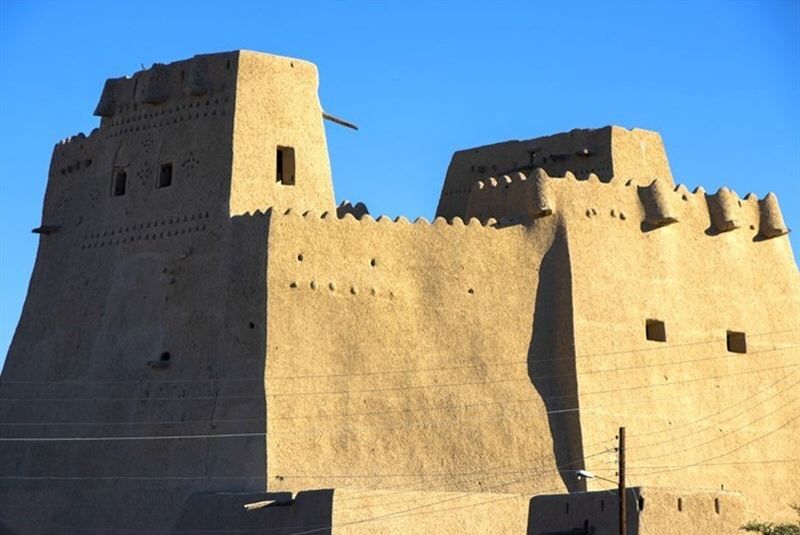
Sab Castle, named for the numerous springs in the area (with "Sab" meaning spring location), is renowned as one of the most beautiful and well-preserved castles in the country. Its history predates the Qajar era, showcasing its ancient roots. In the central courtyard, a well was dug into the rock to supply drinking water to its residents. Located approximately 50 kilometers from the city of Saravan, the tallest brick building in Sib Sawaran city stands as a testament to the castle's historical and architectural significance.
17- Sar Yazd Iranian Castle
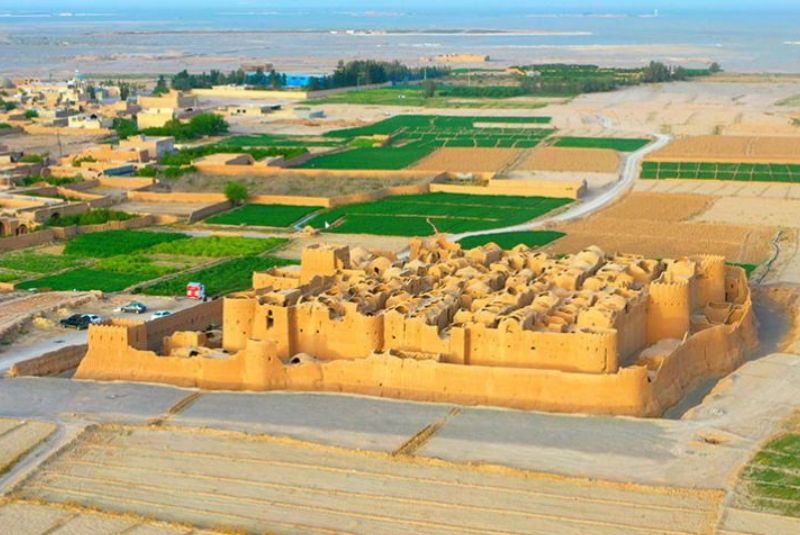
Sar Yazd Castle, a stunning 1400-year-old structure located in the small town of Mehriz, is one of the finest examples of Persian castles in Iran. Walking through its compact architecture, narrow alleys, and three-story houses offers visitors a profound sense of history. This historical gem, however, holds more than just architectural beauty.
18- Shush Castle
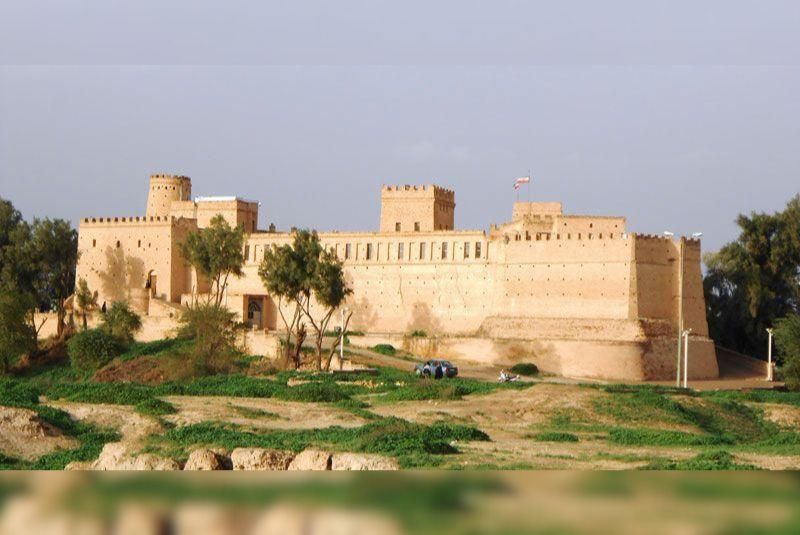
Nestled within the ruins of the ancient city of Shush in Khuzestan province, southern Iran, Shush Castle stands as a striking resemblance to medieval French monuments. Constructed by French archaeologist Jean-Marie Jacques in the late 1890s, the castle is a well-preserved example of pre-scientific era architecture.
Built by a French architect in the 19th century on the ruins of the historic city of Susa, this remarkable structure combines elements of medieval French design with local architectural influences. Among its notable features, the castle once housed a rare cuneiform tablet inscribed with the Code of Hammurabi, a significant artifact now held at the Louvre Museum in Paris.

Shush Castle remains a fascinating site in Khuzestan Province, offering visitors a glimpse into a unique blend of cultural and historical influences. Its preservation and historical significance make it a must-visit destination for those interested in the architectural and archaeological heritage of Iran.
19- Takht -e- Soleiman
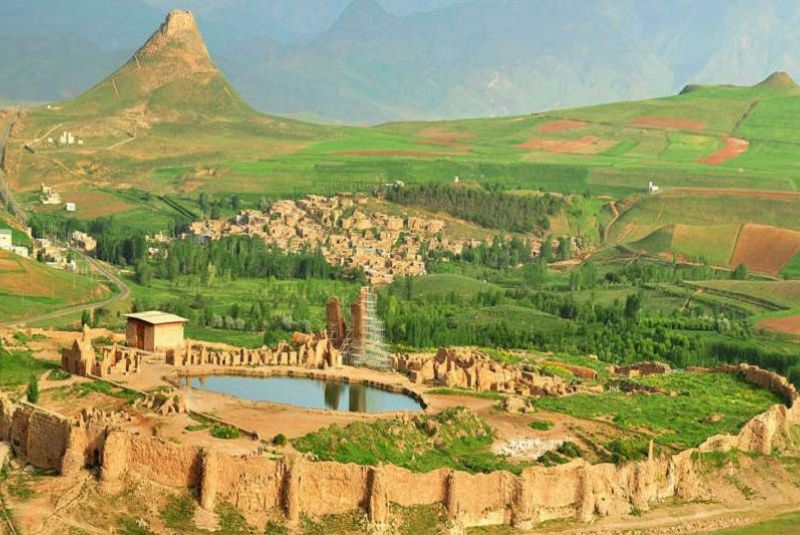
Takht-e Soleiman, meaning "Throne of Solomon," is an archaeological treasure located in north-western Iran, set within a valley in a volcanic mountain region. This significant site encompasses a main Zoroastrian sanctuary that was rebuilt during the Ilkhanid (Mongol) period in the 13th century, alongside a temple from the Sasanian period (6th and 7th centuries) dedicated to the goddess Anahita. The site holds profound symbolic importance related to the elements of fire and water and has notably influenced the development of Islamic architecture.
The complex features the historic remains of the Azargoshtasp fire temple, centered around a mystical lake, and is surrounded by 38 towers built on stone platforms formed from lake sediments. In addition to its rich historical architecture, the area boasts several natural attractions, including the Soleyman Prison Mountain, the Belqeis Castle, and the remains of the Anahita Temple, as well as hot springs.
20- Zahhak Citadel
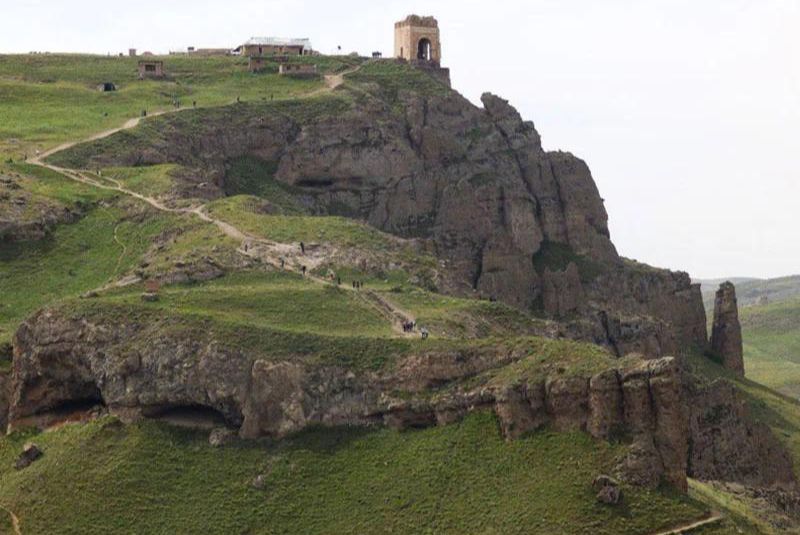
Located in Hashtrood, East Azerbaijan Province, Zahhak Citadel traces its origins back to around 2000 BC. During the later Parthian era (247 BC – 224 CE), it served dual roles as both a governmental building and a fire temple. Today, it draws numerous tourists who brave long journeys through rugged passes to behold its ancient splendor.
Spread over an area 10 kilometers long and 2 kilometers wide, the fortress is perched atop cliffs on three sides. Constructed primarily from bricks and plaster, Zahhak Citadel features a unique architectural layout. Half of its rooms are open-ceiling structures dug into the ground, while the other half are carved into the mountainside, often containing water reservoirs and niches along the walls.

One remarkable engineering feat discovered through excavations is the system that directed mountain-spring water to the fortress using mud conduits. The citadel's name, Zahhak, holds significant cultural resonance in Iran, stemming from Ferdowsi’s epic tale. In Iranian folklore, Zahhak is depicted as an infamous tyrant with serpents emerging from his shoulders that fed on human brains, a story that has ingrained itself deeply in the country's cultural fabric.
Bottom Line
Exploring Iran's beautiful castles is like stepping into a living history book, each one revealing a unique tale of the past. Don't miss the chance to visit these incredible sites and experience their rich heritage firsthand. Start planning your trip today and uncover the mysteries of Iran's historical castles. Your adventure awaits!
Share your story!
Comment below and let us know about your Experience.
Your story inspires others!


Comment
Leave a Comment